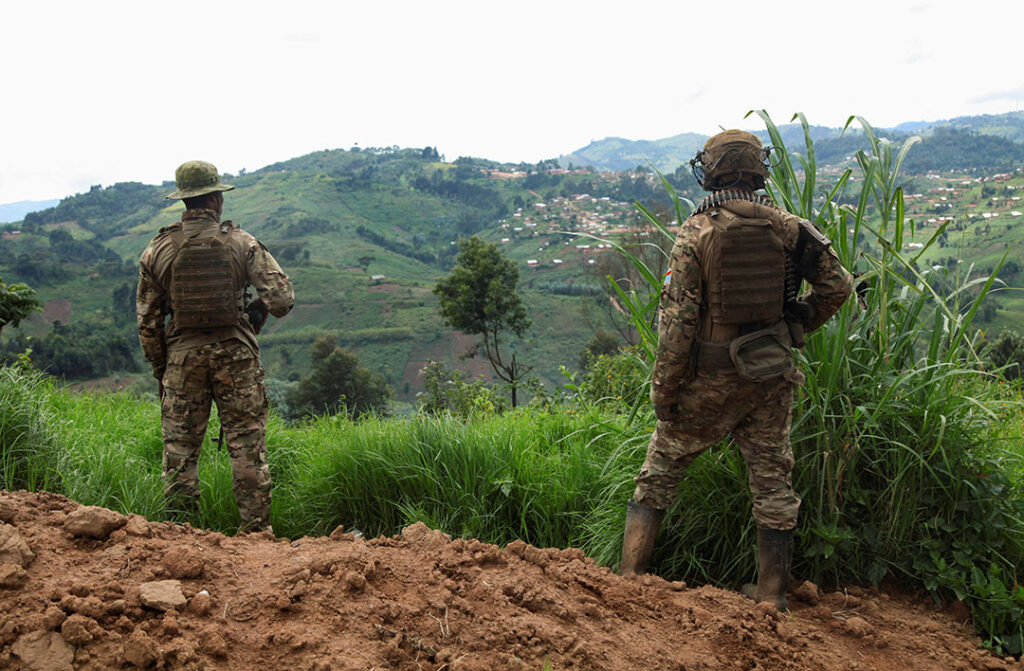With more than 100 armed groups operating in eastern Democratic Republic of the Congo, the region is one of the world’s worst conflict zones. The M23 rebel offensive, launched in late January, further ratcheted up the violence and chaos.
As M23 rapidly expanded its territory to the north and south of the regional capital, Goma, it drew more attention from the Congolese military (FARDC) and allied militias, which may have given the region’s Islamic State affiliate more space to launch attacks.
“Even by conservative fatality estimates, the first quarter of this year was the most fatal since 2002, when the country was embroiled in the Second Congo War,” analyst Ladd Serwat wrote in a June 18 report for the Armed Conflict & Location Event Data project (ACLED).
“While both the M23 and Allied Democratic Forces have long been active in North Kivu province, the violence by each group was previously concentrated in geographically distinct areas,” Serwat wrote. “When these areas converged, what followed is illustrative of the risk of escalating insecurity through overlapping violence.”
Initially formed as a Ugandan rebel group in 1994, the Allied Democratic Forces is led by Musa Baluku, who moved the group toward more extremist views. In 2019, Baluku pledged allegiance to the Islamic State group and renamed his group the Islamic State Central African Province (ISCAP).
In a report released in January, a United Nations group of experts said there were persistent rumors throughout 2024 about contacts between M23 and ISCAP, which intensified when M23 advanced into ISCAP’s area of operations in Lubero in February 2025.
“Multiple sources confirm that M23 sought a non-aggression pact with the Allied Democratic Forces, requesting safe passage — including for recruits transiting from Ituri to M23 territory — and urging the Allied Democratic Forces to limit attacks to FARDC Soldiers,” the report stated. “Baluku reportedly refused, citing mistrust of M23, and reaffirming his commitment to continue targeting ‘infidel’ civilians.”
Concurrent operations by M23 and ISCAP in North Kivu in the first three months of 2025 displaced thousands and led to more than 1,600 reported deaths, ACLED said.
“While the M23 and [ISCAP] have yet to clash with one another, their simultaneous operations in geographically proximate areas have strained FARDC’s capacity to counter both groups simultaneously,” Serwat wrote. “As the FARDC tried to contain the M23 advance in the first quarter of 2025, its attention was diverted, allowing the Islamist group to carry out a surge in civilian targeting.”
Also responding to the M23 advance in February, the Uganda People’s Defence Force deployed an additional 1,000 troops as part of Operation Shujaa, reportedly raising its numbers to as many as 5,000 Soldiers. Uganda has been working with the Congolese military to fight ISCAP in eastern DRC’s North Kivu and Ituri provinces since the operation began in 2021.
In March, Ugandan military intelligence claimed that ISCAP forged a new alliance with a coalition of Lendu militants, called the Cooperative for Development of the Congo.
After ISCAP attacks killed 24 civilians in May, Tiu Upangi Musa, a traditional chief in the Kasenye area of Lubero, told the Congo Quotidien news website that ISCAP is “no longer alone. Other armed groups with similar methods are operating in the shadows.”
In March, Dragonfly’s Security Intelligence & Analysis Service warned that ISCAP intends to exploit the DRC’s focus on the M23 rebels.
“Based on a recent rise in the pace of its attacks, it already seems to be operating with greater freedom since the military diverted some resources away from the area,” the report stated.
Serwat concurred and warned that ISCAP could intensify its deadly attacks in the second half of 2025.
“Despite a relative lull in the M23 rebellion, the ensuing collapse of authority has provided ample opportunities for [ISCAP] to entrench its presence in the eastern DRC, exposing the local civilian population to the effects of mass violence,” he wrote.

